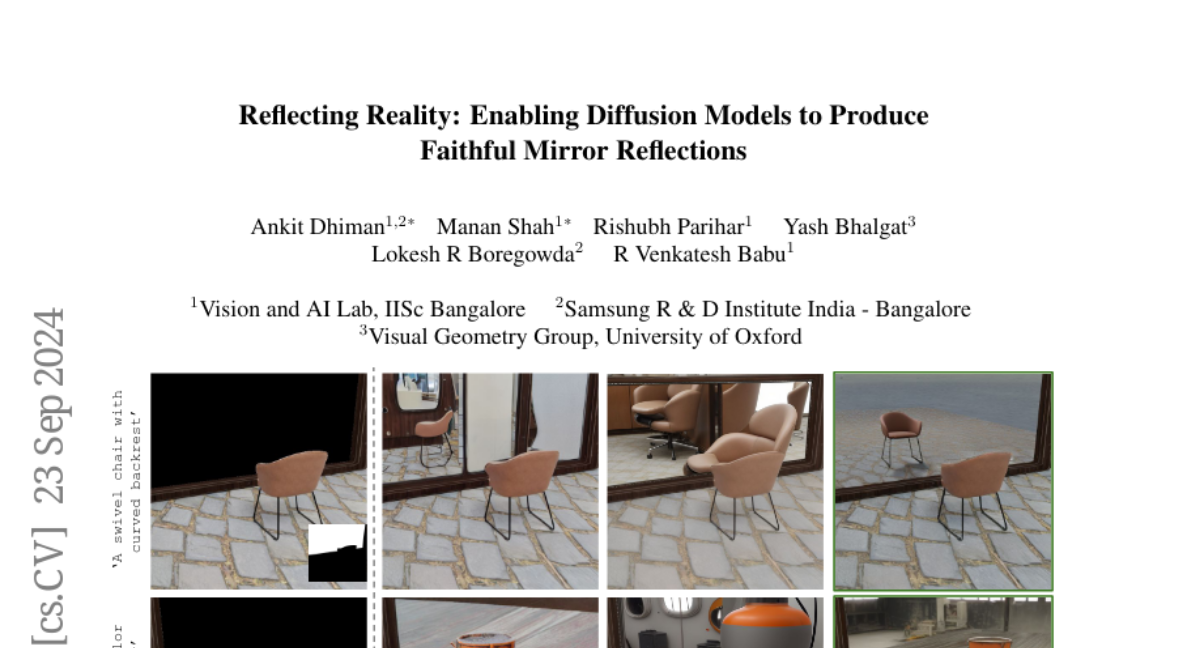Reflecting Reality: Enabling Diffusion Models to Produce Faithful Mirror Reflections
Ankit Dhiman, Manan Shah, Rishubh Parihar, Yash Bhalgat, Lokesh R Boregowda, R Venkatesh Babu
2024-09-24

Summary
This paper discusses a new method called MirrorFusion, which allows computers to create realistic mirror reflections in images using a special dataset called SynMirror. This method helps improve how images are generated by ensuring that the reflections look accurate and believable.
What's the problem?
Generating realistic mirror reflections in images is challenging because traditional methods often fail to capture the correct geometry and details of what should be reflected. This can lead to unrealistic or confusing images where the reflections don’t match the actual scene. Additionally, existing datasets for training these models are often limited and do not provide enough variety for effective learning.
What's the solution?
To solve this problem, the researchers created SynMirror, a large dataset containing around 198,000 images of various 3D objects placed in front of mirrors. This dataset includes not just the images but also important details like depth maps and segmentation masks that help capture the scene's geometry. They then developed MirrorFusion, a new technique that uses this dataset to generate high-quality mirror reflections by conditioning on depth information. This allows the model to produce more accurate and visually appealing reflections than previous methods.
Why it matters?
This research is important because it enhances the capabilities of image generation technologies, making them more useful for applications like photo editing and augmented reality. By improving how mirrors are represented in images, it opens up new possibilities for creating realistic visual content, which can be beneficial for artists, designers, and developers working in various fields.
Abstract
We tackle the problem of generating highly realistic and plausible mirror reflections using diffusion-based generative models. We formulate this problem as an image inpainting task, allowing for more user control over the placement of mirrors during the generation process. To enable this, we create SynMirror, a large-scale dataset of diverse synthetic scenes with objects placed in front of mirrors. SynMirror contains around 198K samples rendered from 66K unique 3D objects, along with their associated depth maps, normal maps and instance-wise segmentation masks, to capture relevant geometric properties of the scene. Using this dataset, we propose a novel depth-conditioned inpainting method called MirrorFusion, which generates high-quality geometrically consistent and photo-realistic mirror reflections given an input image and a mask depicting the mirror region. MirrorFusion outperforms state-of-the-art methods on SynMirror, as demonstrated by extensive quantitative and qualitative analysis. To the best of our knowledge, we are the first to successfully tackle the challenging problem of generating controlled and faithful mirror reflections of an object in a scene using diffusion based models. SynMirror and MirrorFusion open up new avenues for image editing and augmented reality applications for practitioners and researchers alike.